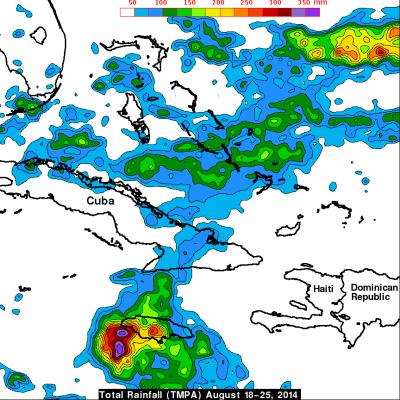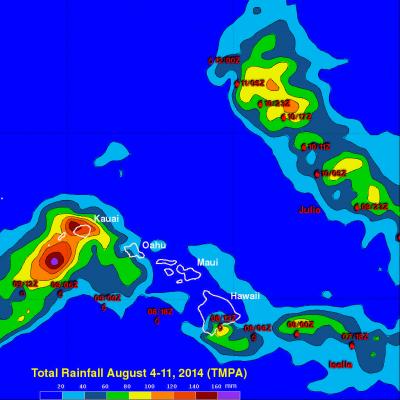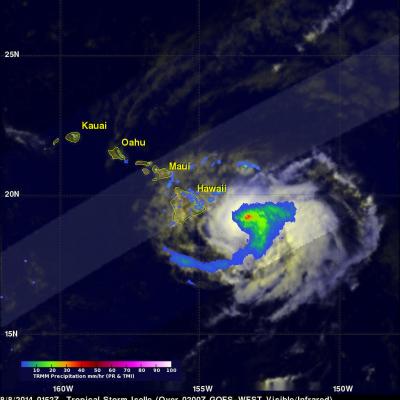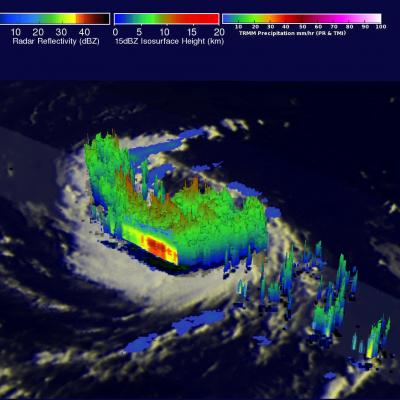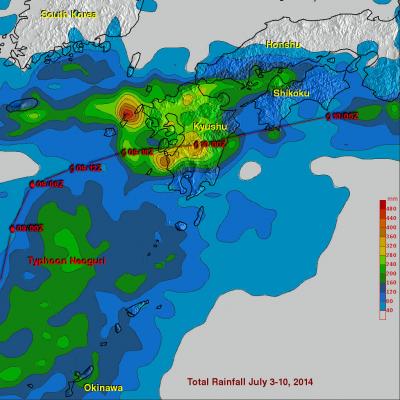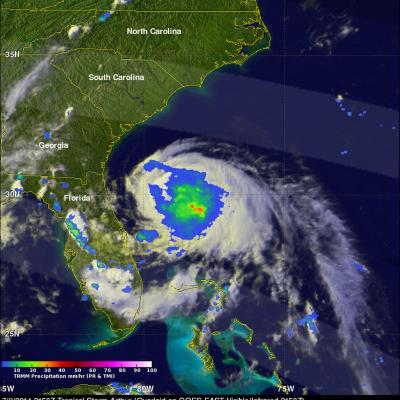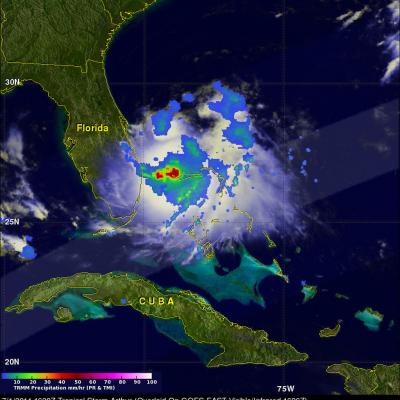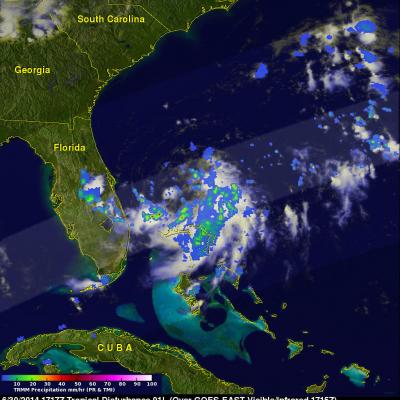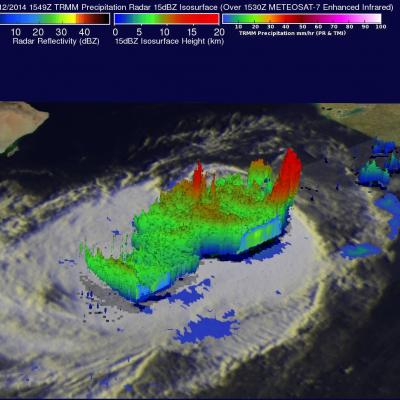Deadly Tropical Storm Cristobal
Strong winds and flooding associated with tropical storm Cristobal have caused deaths in the Dominican Republic, Haiti and Jamaica. Rainfall data for the first image above was captured by the TRMM satellite on August 24, 2014 at 1150Z (7:50 AM EDT). Tropical depression four was upgraded to tropical storm Cristobal a short time after that TRMM view. The next image uses data received by TRMM a day later on August 25, 2014 at 1230 UTC ( 8:30 AM EDT). Cristobal was a sheared tropical cyclone with a rain free center so a red tropical storm symbol was used to clarify the location of Cristobal's


